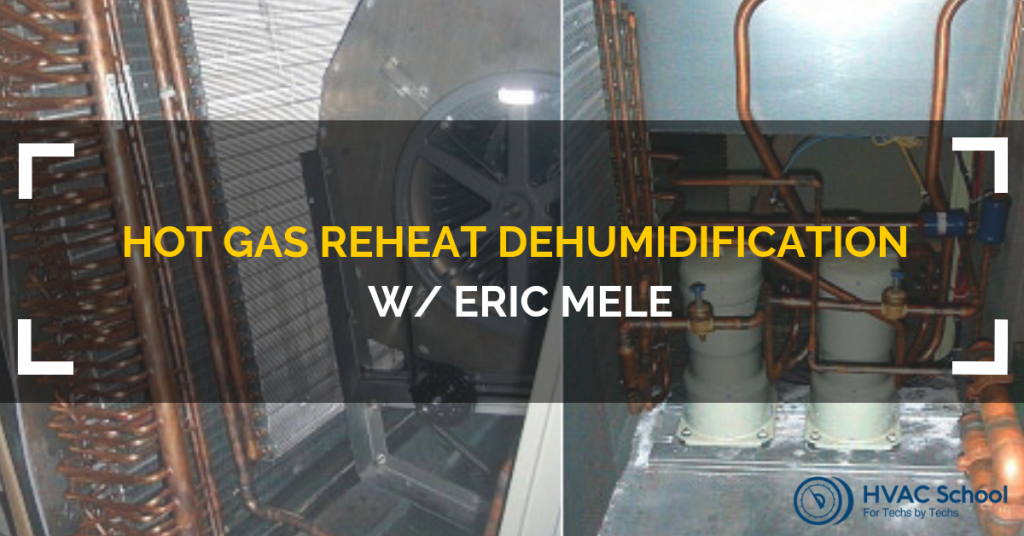Hot Gas Reheat Dehumidification w/ Eric Mele (Podcast)

Eric Mele is back on the podcast. This time, we cover hot gas as a reheat dehumidification strategy with all of the broad strokes you should be aware of.
One common dehumidification strategy is the hot gas bypass; this strategy allows you to operate under low load. Hot gas reheat is when you add discharge heat back to the conditioned space. When you use reheat for dehumidification, you cool for the purpose of dehumidification and then add sensible heat to remove moisture on the coil. So, you don't overcool the space to an uncomfortable level.
Hot gas reheat uses waste heat from the equipment to remove moisture. Using waste heat is not a very efficient process, but it is better than using electricity or fuel to provide a heat source. Common systems that use this reheat system are 100% outside air units and humidity-control applications. Systems that use hot gas reheat can divert refrigerant to a reheat coil or use a dedicated reheat circuit. No matter which strategy the equipment uses, the reheat always happens AFTER the evaporator coil.
Common issues with these reheat systems deal with the modulating valves. These valves can get stuck or end up in a different position than their controls say. You must confirm that the valves are in position. When working with these valves, you may work with DC controls, so that's something to keep in mind if you primarily work with AC circuits/controls. DC-signal sensors can also malfunction, so you have to check your outputs and can usually find a sensor-related problem quite easily.
We also discuss:
- Overcooling to dehumidify
- Fresh air requirements and equipment
- Solenoids
- Expansion line
- Technician vs. manufacturer training
- Confirming valve position
- Stepper motors
- Tools for circuits
- Checking the refrigerant charge









Comments
To leave a comment, you need to log in.
Log In